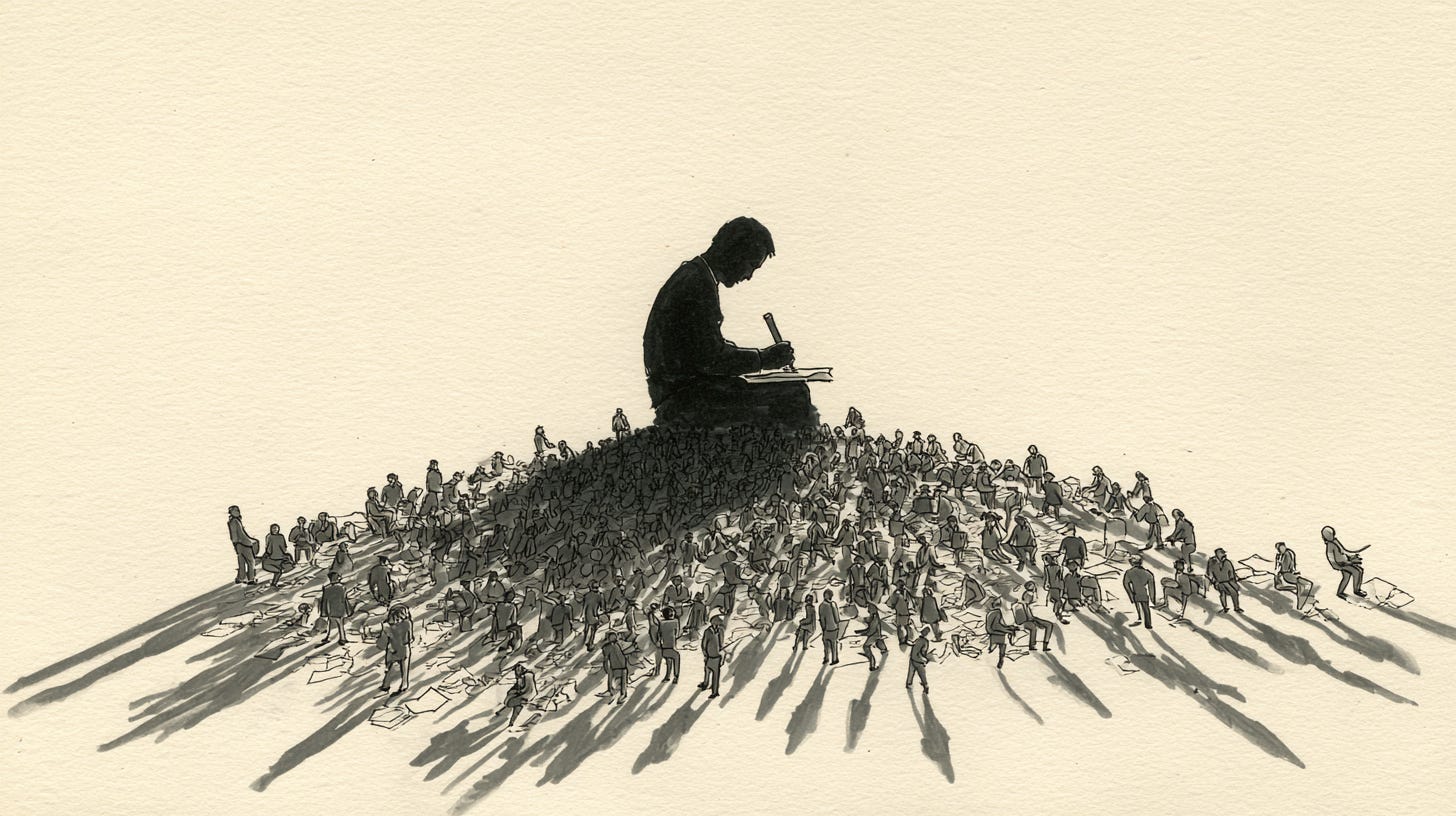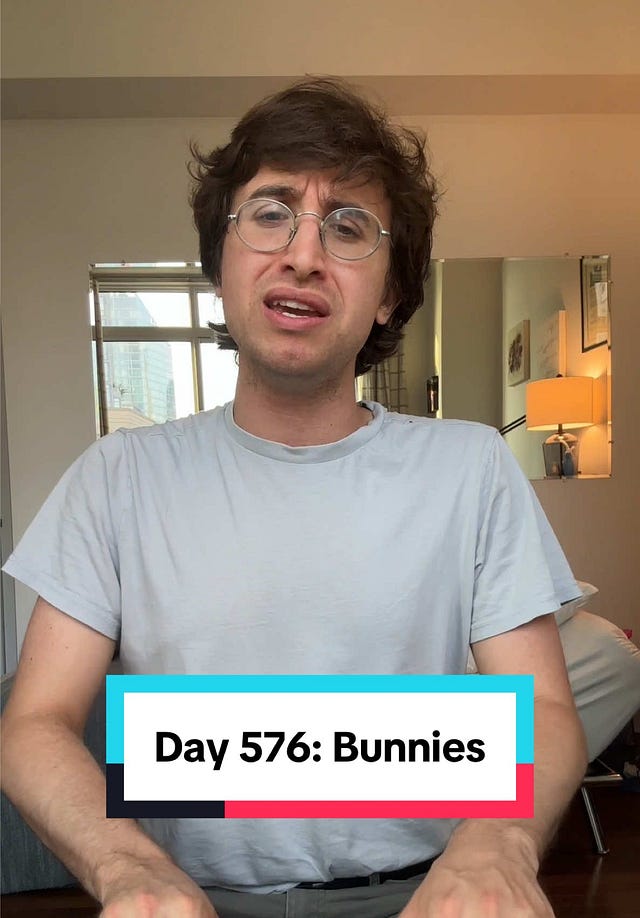I’m bored with looking good
…isn’t my all-time favorite lyric, but it’s close. Five words packed with so much innuendo, so many potential storylines. Especially when it’s Iggy, singing seated and shirtless, distain on full throttle. I liked the new Superman movie well enough, but choosing that song for the end credits made it hang together. Anyone else remember Modernista using “Punkrocker” back in 2006 for Cadillac?
The business of taste in the age of AI
Perhaps one of the more alluring aspects of AI is the way in which it might conveniently rid us of the business of taste.
What I mean is the world of marketing, design and advertising has never really solved the challenge of operationalizing taste across large diverse organizations. It’s that je ne sais quoi which eludes MBA schooling, learning and development strategies, team-building offsites. Only rarely does an agency and client collectively capture lightning in a bottle, consistently, without question, for a period. And then...
Taste is hard.
To define, to scale, to balance across a diversity of humans, locations, hierarchies, and outcomes. Taste appears subjective, comes across as political, feels judgemental.
Hence the stereotype of a Steve Jobs or Anna Wintour or any number of film directors personified as dictators—the long shadow of a single person dictates typography, grid systems, color, and conceptual approach to solving business problems. And so we have enabled and encouraged working environments where, “well, those people know what to do,” and the legions merely follow orders. Only a few have the magic ability to which everyone else must defer. In this context taste creates resentments, creates bureaucracies, but let’s not kid ourselves—it can work wonders, too.
And now here comes AI, gunning for organization-wide tastemaker. What if this general purpose technology, with its vast pattern matching/pattern generating ability solves some or all of the elusive pattern we call taste?
A little chatbox has the unnerving potential to unlock the ability for anyone, regardless of training, regardless of experience, role, authority; regardless of innate ability with words or design systems or color or concepts; to have what appears to be taste.
You could distill a brand’s foundational parameters inside the LLM of Canva or Adobe or ChatGPT. Same with customer persona insights. Competitor positioning. All of the ingredients which fuel taste—now lurking behind the screen, guiding even the least skilled.
It’s easy to dismiss the outcome as slop. But careful. “Slop” is also “work the right person didn’t control.” Slop equals all that stuff that someone else made that I have strong opinions about. But what if the slop performs well? (Drew Austin writes, “AI slop is just the culmination of how humans have been using the internet for years.” Worth your time, that one.)
This is an age old problem under new technological clothing. How does an organization direct and manage collective communal consensus around what equals taste? Fortunately, there’s a TikTok for that. Hat tip to
for pointing to the creator Zauey who name checks the three-way culture split articulated 25 years ago by economists Tyler Cowen and Alexander Tabarrok.Don’t forget all the emotions loaded into that word, taste. Creativity is loaded with emotions. Maybe the magic of AI will be it’s potential to further abstract and remove emotions from the business of creativity. I can hear Iggy chuckling.
⚡️AI lightening round
I’ve had the good fortune to talk with a diverse mix of humans using AI to enhance and evolve how they’re working. Three excerpts:
A retail sales manager: Built a “tough customer persona” in ChatGPT for new employees to train with before they’re allowed on the floor. Employees can use typing or talking modes to engage. The manager can review transcripts to aid coaching.
A marketer: Automates scraping key competitors’ social posts into a database so an AI can detect if anything noteworthy is changing, as well as how the competitors’ tone and sentiment sustain over time.
A marketer and inventory manager: Asked an AI to review 12 months of product allocations per retail location. They discovered something no one had ever considered—product color preference could be driven by geography. Location A sold a ton of red product. Location B took forever for red product to sell.
🎛️ Personalization
If you’re using ChatGPT, I strongly encourage you to A) understand you have an ability to personalize how the LLM engages with you, and B) to do something with that knowledge. It’s easy, and it pays dividends.
Under your ChatGPT profile, click on this option:
The only field you care about is “What traits should ChatGPT have?”
You can supply up to 1500 characters.
Here’s the only hard part: What kind of partner, sparring or otherwise, do you want ChatGPT to personify? What kinds of habits, protocols, behaviors do you want your partner to possess?
Here’s a link to read my ChatGPT Traits - Personalization.
Your results may vary. I want a partner that challenges my point of view, that looks for bias, that challenges my thinking. And there are some habits the default ChatGPT has (i.e. being overly complimentary) which I don’t want present. This is how you modulate those temperaments.
Take ten minutes and think about, then adjust yours now.
If a bot can inhabit
an unknowing rabbit
Again, not my favorite song lyrics but a good take otherwise on those synthetic trampoline bunnies.
 Tiktok failed to load.
Tiktok failed to load.Enable 3rd party cookies or use another browser
🤖 🍁 AI for Artists and Entrepreneurs (online)
From roughly August 25 - December 12 I’ll be teaching a wholly revised, very in-depth, very affordable, 15-session, asynchronous curriculum for MCAD. You can register for it here. You don’t need to be an MCAD student to participate.






